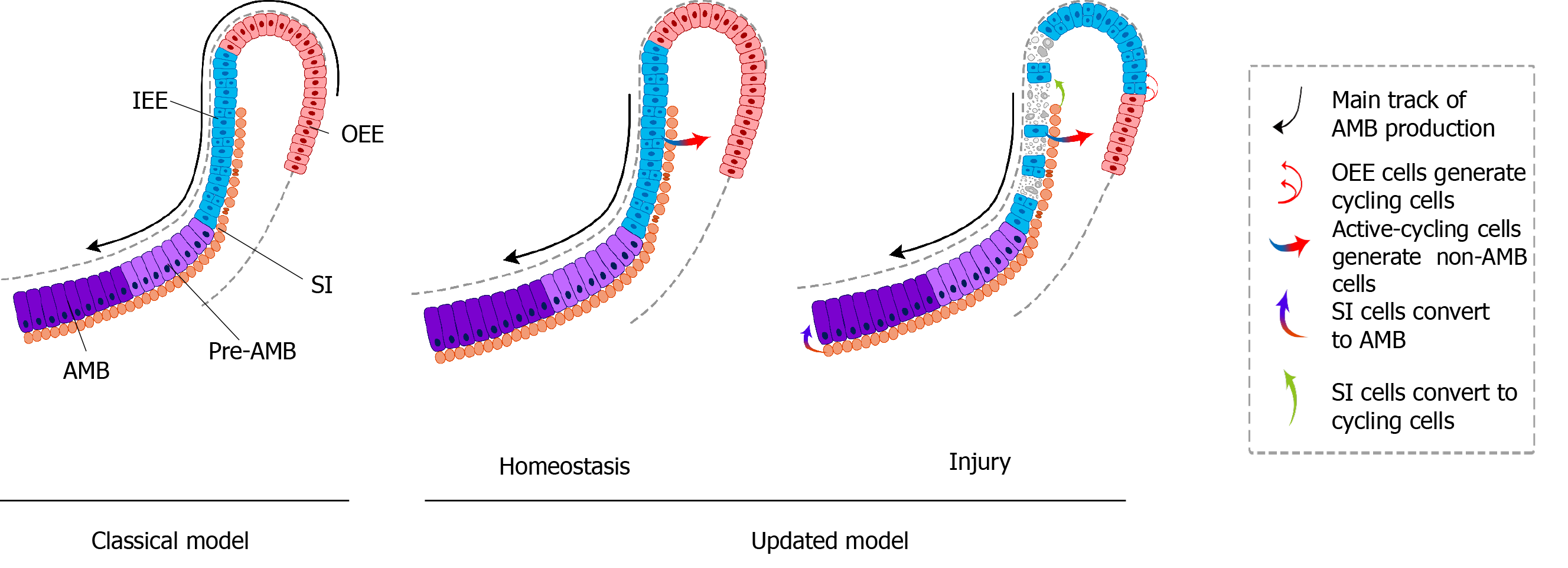Copyright
©The Author(s) 2020.
World J Stem Cells. Nov 26, 2020; 12(11): 1327-1340
Published online Nov 26, 2020. doi: 10.4252/wjsc.v12.i11.1327
Published online Nov 26, 2020. doi: 10.4252/wjsc.v12.i11.1327
Figure 3 Classical and updated models of dental epithelial stem cells in mouse incisors.
A: In classical model, slow-cycling dental epithelial stem cells (pink) from the outer enamel epithelium (OEE) and underlying stellate reticulum (SR) of the labial cervical loop, generate active-cycling TA cells in the inner enamel epithelium (IEE) (blue), which undergo several divisions, migrate distally, and differentiate into pre-ameloblasts (Pre-AMB) and AMB (purple); B: In updated model, actively cycling progenitors in the IEE contribute to the formation of both AMB and the adjacent non-ameloblast epithelial cells (SR, stratum intermedium and OEE) during homeostasis; C: After injury induced with 5-fluorouracil, the proliferation region of IEE is impaired and reduced. During recovery stage, additional progenitors from OEE enter the cell cycle and then recover ameloblast differentiation trajectory, and SI cells can also convert to differentiate into active-cycling cells and AMB. AMB: Ameloblasts; SI: Stratum intermedium; IEE: Inner enamel epithelium; OEE: Outer enamel epithelium.
- Citation: Gan L, Liu Y, Cui DX, Pan Y, Wan M. New insight into dental epithelial stem cells: Identification, regulation, and function in tooth homeostasis and repair. World J Stem Cells 2020; 12(11): 1327-1340
- URL: https://www.wjgnet.com/1948-0210/full/v12/i11/1327.htm
- DOI: https://dx.doi.org/10.4252/wjsc.v12.i11.1327









